Why Should Brands Invest in Native Language Creatives’, a study conducted by NielsenIQ for Disney Star, offers advertisers an insider view on how TV viewers perceive, recall, and prefer original native language ads versus dubbed ads.
In a country where regional language audiences comprise more than 50% of TV households, understanding the relative strength of native language TV ads can change the entire advertising ballgame.
A recent study commissioned by Disney Star, executed by NielsenIQ, delved deep into the psyche of regional television viewers and presented some valuable insights into whether dubbed or original TV ads are more effective, and why.
The study strongly indicated that respondents recalled, liked, understood, and recommended original native language ads far more effortlessly than dubbed ads. Among dubbed ads, only the dubbed ads featuring a celebrity had any recall value.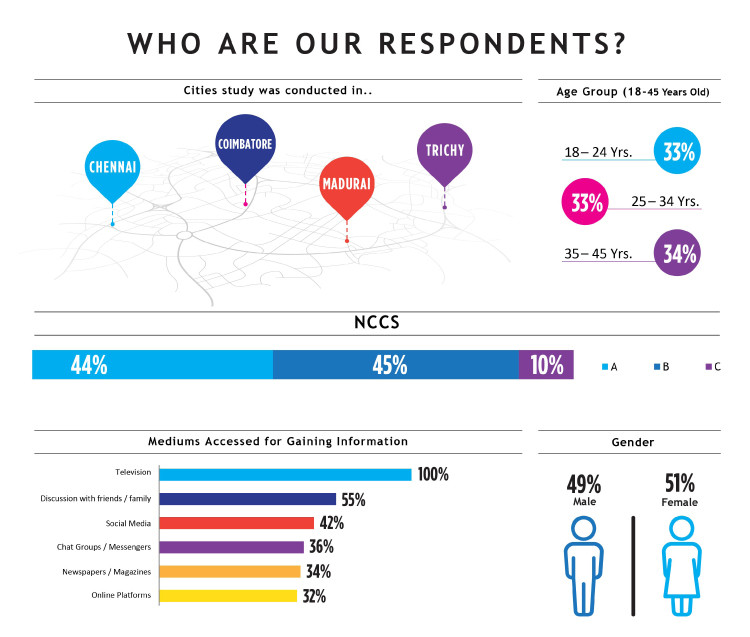
INFOGRAPHIC: Respondents Data
A mixed bag of 48 ads - 25 dubbed ads and 23 original native language ads were part of the test reel. There was a spectacular 3X higher top-of-mind awareness (TOM) and recall for ads shot in the native language vs. for dubbed ads. This clearly reflects that TV viewers find communication much more memorable when it is organically created in their local language.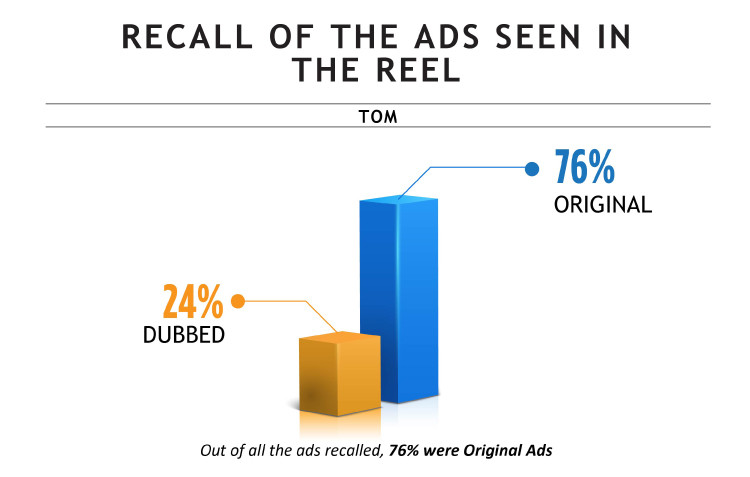
INFOGRAPHIC: TOM, T Brand Metrics
When it comes to TV ads, film & sports celebrities have always been a popular choice with advertisers due to their star value and audience connect. However, with a native language ad, advertisers don’t need a high cost celebrity for the ad to be effective. This is an important insight – this means that salience and market share goals can be achieved with far less dependence on high-cost celebrities.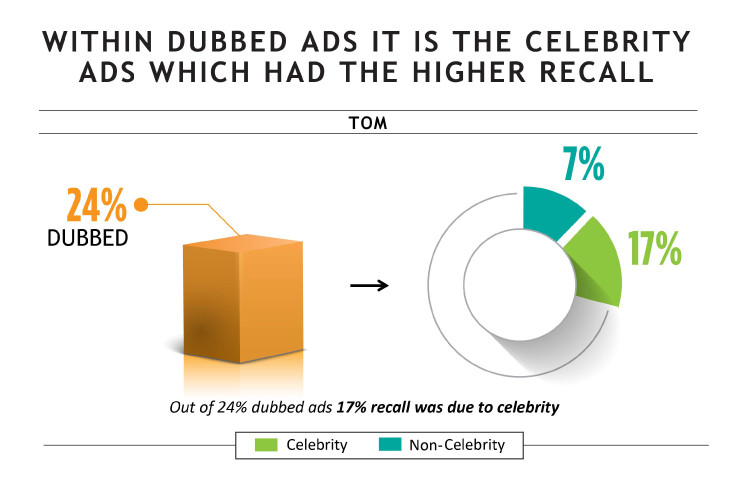
INFOGRAPHIC: Celebrity VS Non Celebrity Ads: TOM, Metrics
Another factor the study looked at was ad likeability. With TV ads being multi-sensory inputs, respondents were asked to rate the reel ads for reasons that made them like certain ads more than others. Factors like product description, ad content, original language, celebrity presence, music and jingle, and the ad setting were looked at.
Interestingly, respondents had a natural inclination and liking toward native language ads, signalling that ad originally made in ‘my language’ played a pivotal role in liking the ad.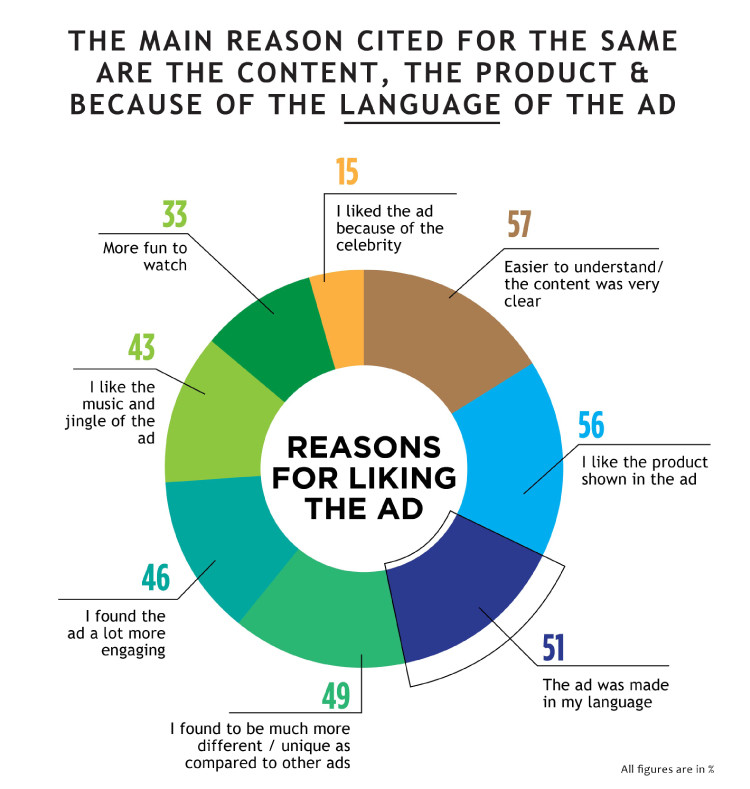
INFOGRAPHIC: Reasons Cited for Liking the Ads – 51% Liked the ads because the ‘AD WAS MADE IN MY LANGUAGE’
The study also revealed valuable insights into what makes a TV viewer take action after watching an ad. Respondents showed a higher intent of taking a specific action, such as recommending the product or discussing the product with friends and family at the back of viewing original ads, compared to dubbed ads.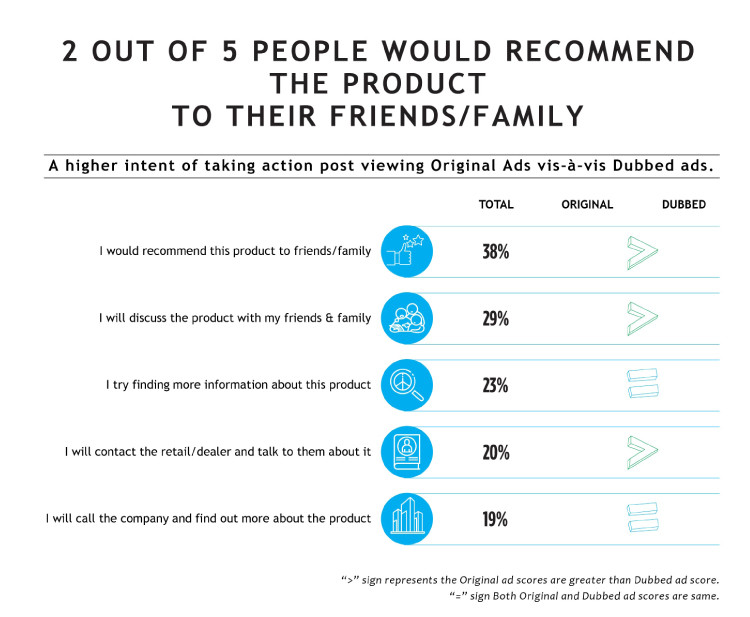
INFOGRAPHIC: Actions taken after viewing original ads
The market research study indicates regional consumers’ higher inclination towards their own language ads. Native language creatives and original content rule the roost by performing better than dubbed ads across all KPIs, be it the recall of seeing the ad, the likeability of the ad, relevance and uniqueness of the ads and also the ease of understanding the ads. At a time when advertisers are looking to maximise their reach and engagement through television ads, knowing what works best with their regional audiences is an eye-opener on many counts to invest in the right creatives.
E - PAPER
ORIGINAL ADS OUTPERFORM DUBBED ADS: NIELSENIQ
A study conducted by NielsenIQ for Disney Star, offers advertisers an insider view on how TV viewers perceive, recall, and prefer original native language ads versus dubbed ads.
 BY
TEAM IMPACT
BY
TEAM IMPACT
15th June 2022
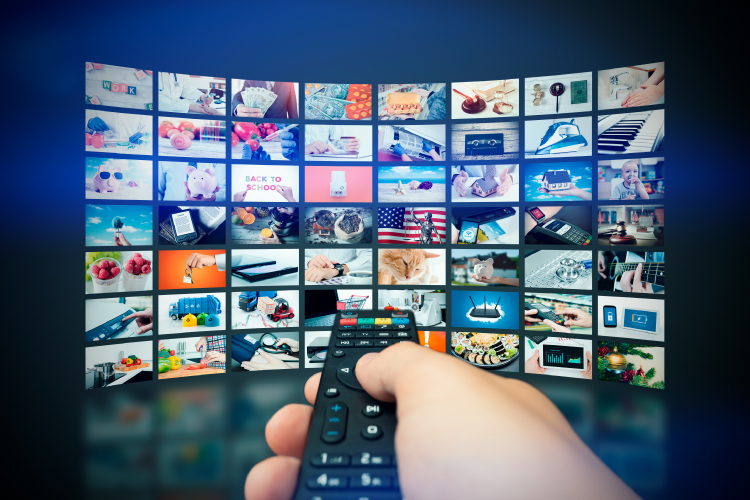
RELATED STORY VIEW MORE
TOP STORY

RAD ADS OF THE WEEK
Some of our favourite ads from the past week. Read what the makers behind these ads have to say about the idea and execution
NEWS LETTER
Subscribe for our news letter
E - PAPER
-

CURRENT 
LAST WEEK
Subscribe To Impact Online
IMPACT SPECIAL ISSUES

Anupriya Acharya Tops the IMPACT 50 Most Influenti
Advertising Turbocharged
A Toast to creativity
GOAing towards tech-lead creativity
REDISCOVERING ONESELF
50 MOST INFLUENTIAL WOMEN LIST 2022
BACK WITH A BANG!
Your Best Coffee Ever
PR Commune Magazine June-July 2022
13th-ANNIVERSARY-SPECIAL
PR Commune Magazine April 2022
VIDEO GALLERY VIEW MORE

Use your existing account to sign in
.jpg)
.jpg)
.jpg)



